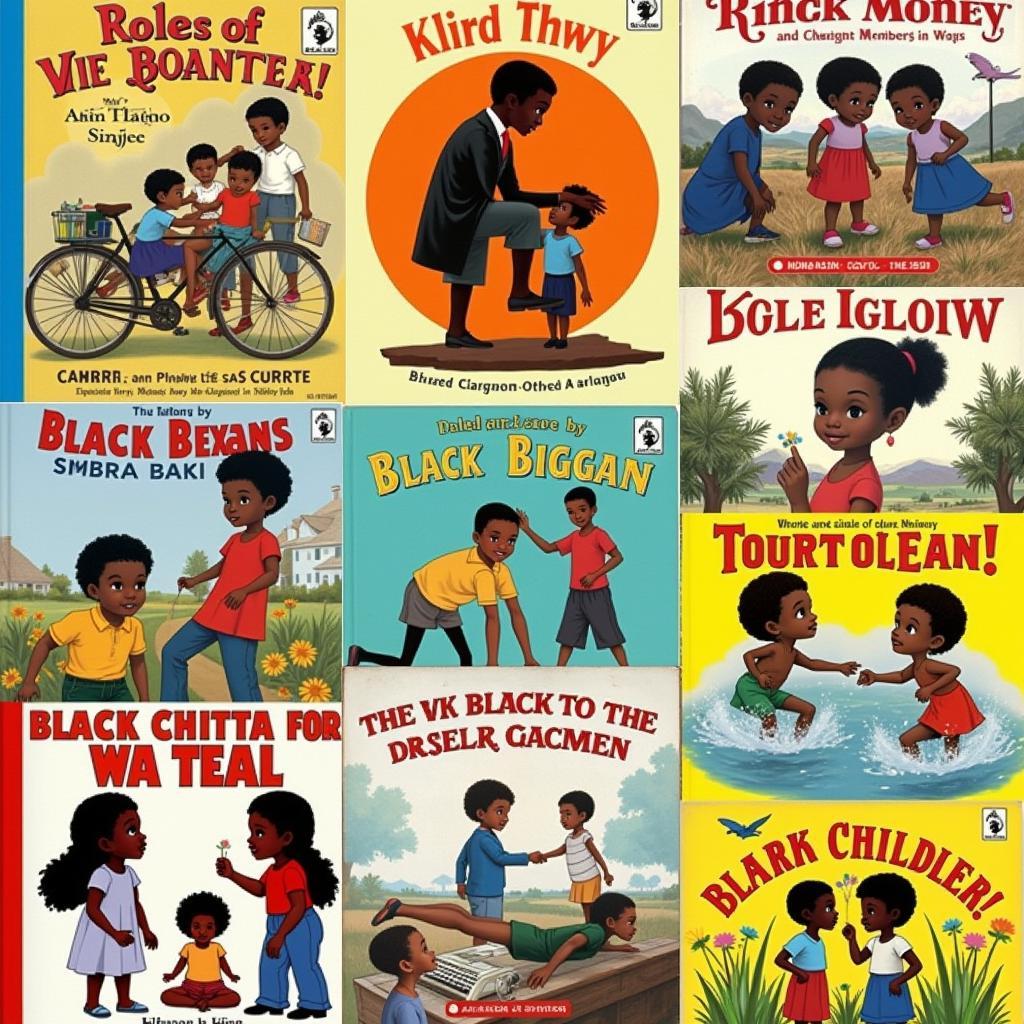African American Children’s Literature: The First One Hundred Years
African American children’s literature, encompassing a century of rich narratives, offers a powerful lens into the experiences, challenges, and triumphs of Black children in America. From the late 19th century, this body of work has evolved dramatically, reflecting changing societal landscapes and shifting perspectives on race, identity, and representation.
A Legacy Born of Resistance: Early Works and Their Significance
The first one hundred years of African American children’s literature were profoundly shaped by the legacy of slavery and segregation. Early works often served as tools of resistance, seeking to counter negative stereotypes and instill pride in Black children.
 Early 20th-century books featuring African American children
Early 20th-century books featuring African American children
One notable example is Little Black Sambo (1899), a controversial book that, despite perpetuating harmful stereotypes, sparked conversations about race and representation in children’s literature. While the book is widely criticized today, its impact on the evolution of the genre cannot be ignored.
The Harlem Renaissance: A Flourishing of Creativity
The Harlem Renaissance marked a pivotal moment in African American literary history, and children’s literature was no exception. Authors like Langston Hughes and Zora Neale Hurston, luminaries of the movement, penned stories celebrating Black culture, heritage, and identity.
These works, filled with vibrant imagery and authentic portrayals of Black life, provided a stark contrast to the stereotypical depictions prevalent in mainstream children’s books. The Harlem Renaissance instilled a sense of agency and self-worth in young readers, paving the way for more diverse and nuanced narratives.
Breaking Barriers: Post-War Progress and the Civil Rights Era
Following World War II, African American children’s literature continued to evolve, reflecting the growing momentum of the Civil Rights Movement. Authors like Ezra Jack Keats and John Steptoe challenged racial barriers, depicting Black children in everyday settings and addressing themes of equality and social justice.
Keats’s groundbreaking The Snowy Day (1962), featuring a young Black boy named Peter enjoying a snowy day, became an instant classic. This seemingly simple story marked a significant shift in children’s literature, offering a positive and relatable portrayal of a Black child as the protagonist.
The Power of Representation: Looking Back and Moving Forward
The first one hundred years of African American children’s literature laid the groundwork for the diverse and inclusive landscape we see today. From early works challenging racist stereotypes to contemporary stories exploring multifaceted identities, this genre has played a crucial role in shaping how Black children see themselves and how the world sees them.
As we celebrate the achievements of the past, it’s vital to acknowledge the ongoing need for diverse voices in children’s literature. By amplifying marginalized experiences and promoting empathy and understanding, we can empower future generations to create a more just and equitable world.
